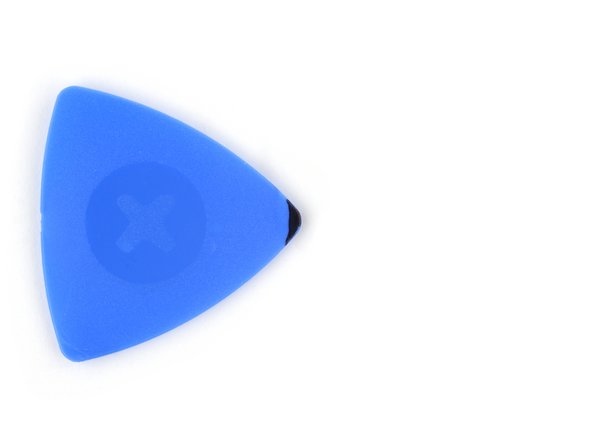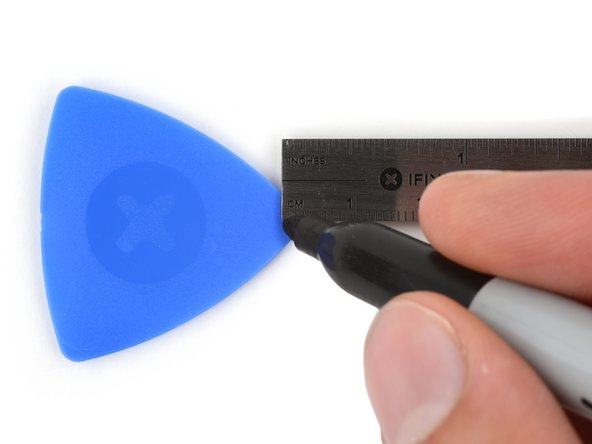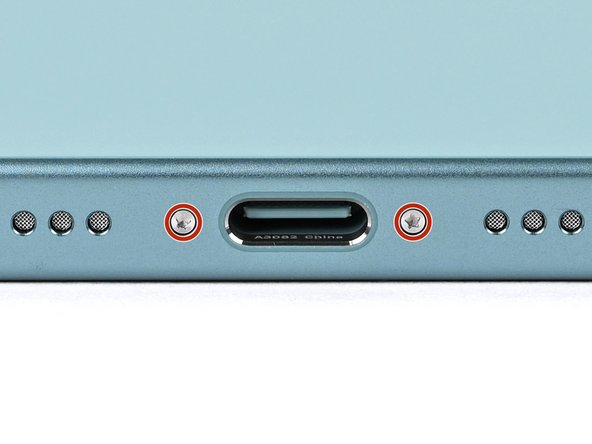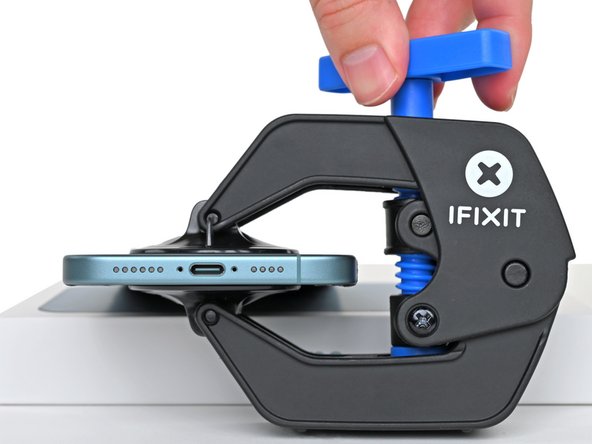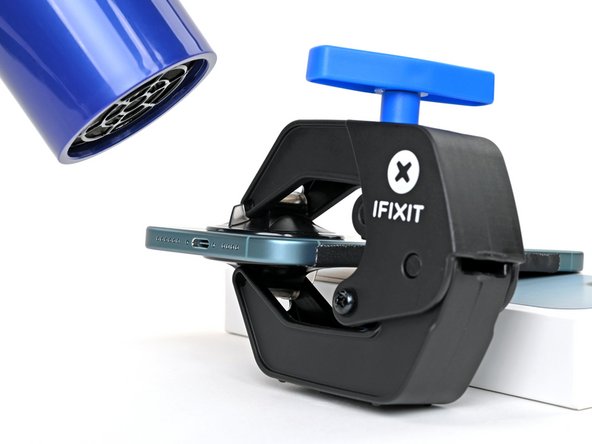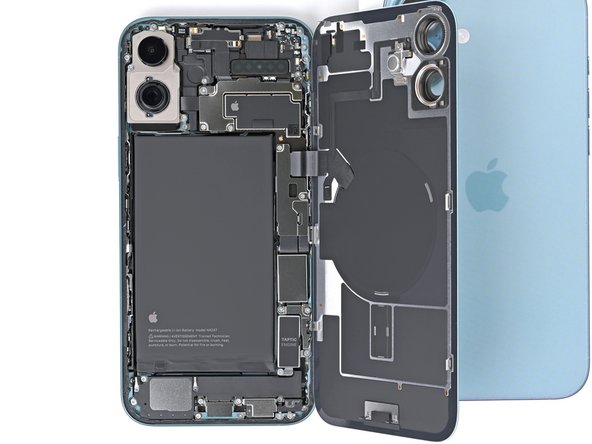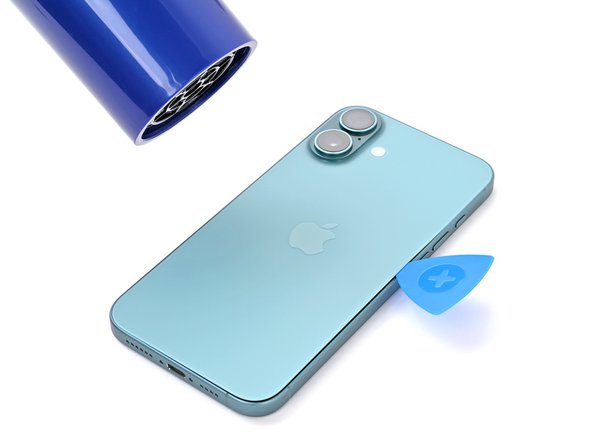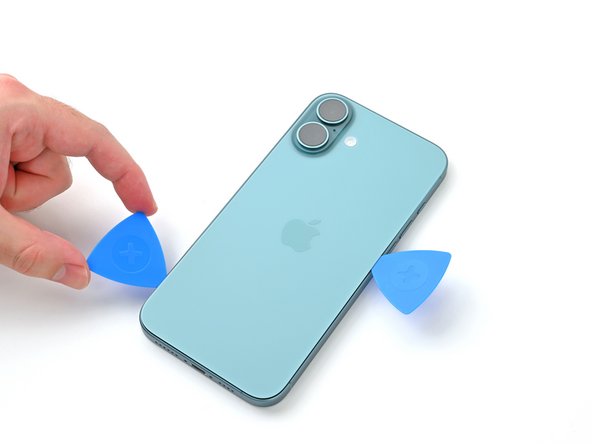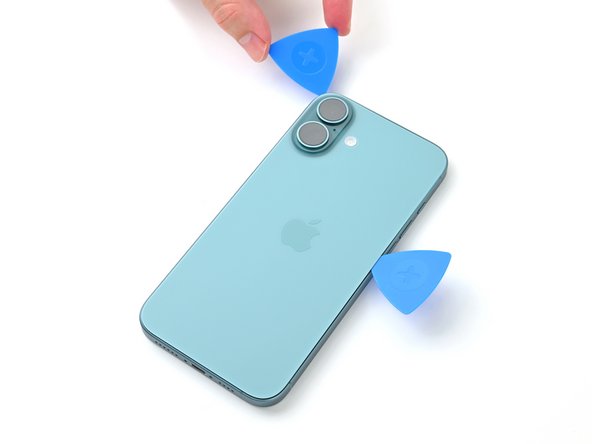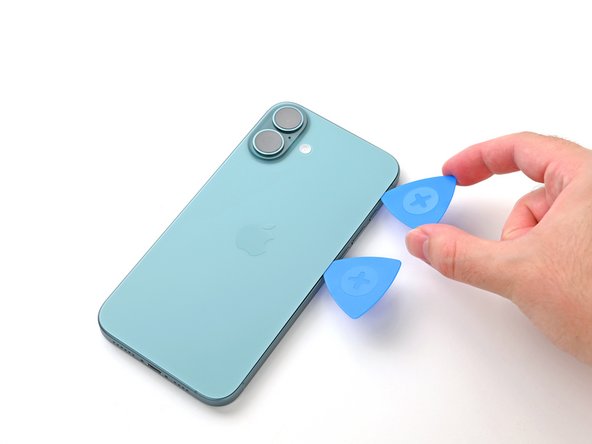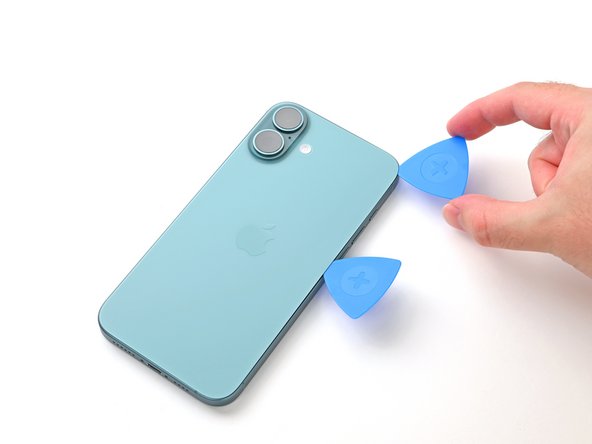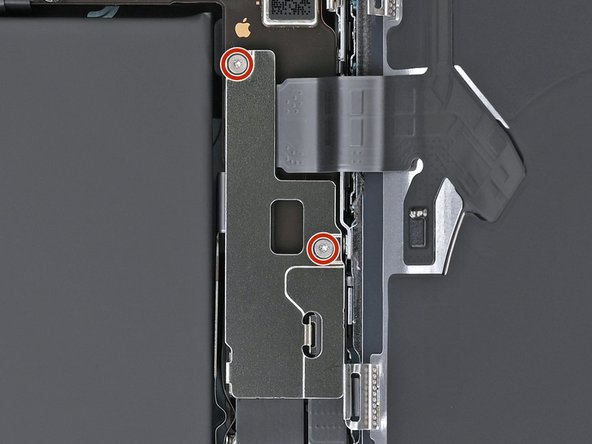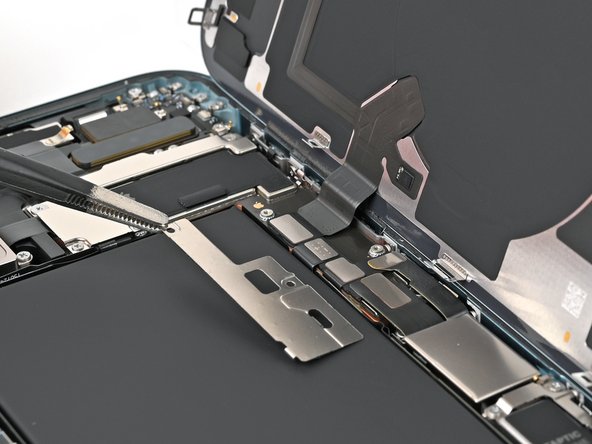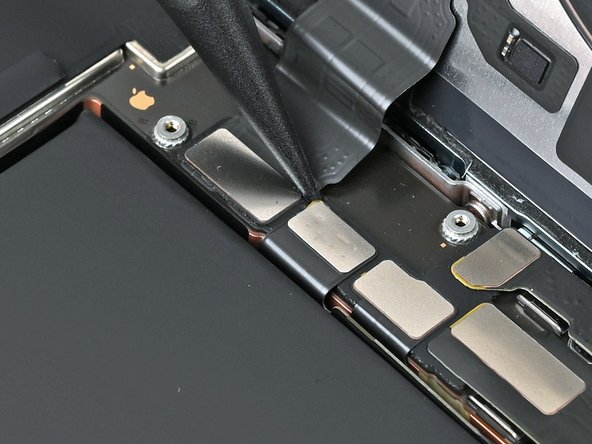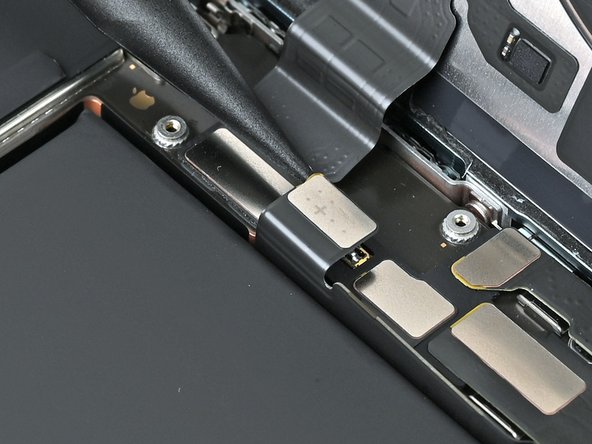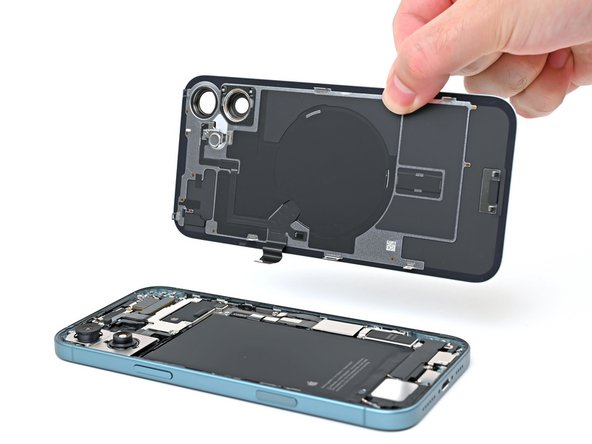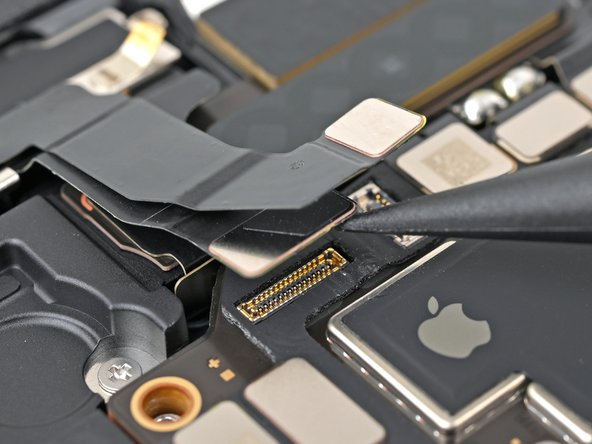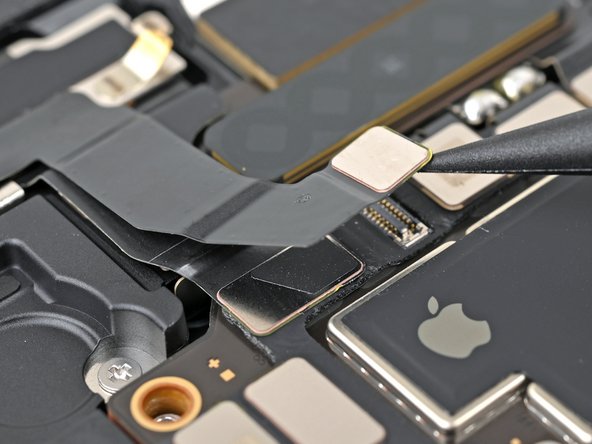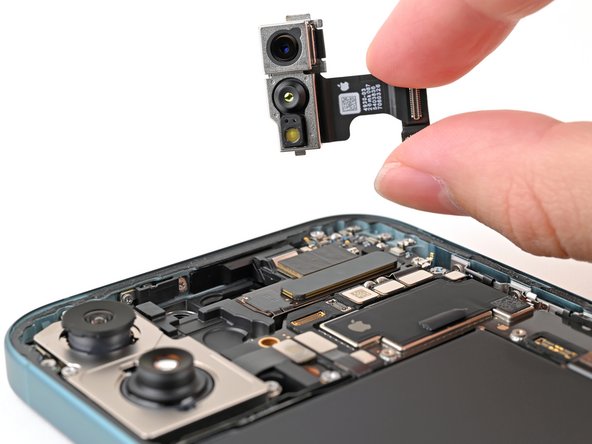How to Replace iPhone 16 Plus Front Camera Assembly
Duration: 45 minutes
Steps: 29 Steps
Connect the new part using Apple’s Repair Assistant
Ready to give your iPhone 16 Plus a little TLC? If your selfies are coming out fuzzy, Face ID is playing hard to get, or your front camera has decided to take a vacation, it’s replacement time! This kit includes everything you need: the front-facing camera and the essential Face ID hardware, all bundled together. Just a heads up, these parts are like best pals with your logic board, so you’ll need to pair them up again with Apple’s Repair Assistant to get all systems go! And don’t forget, some replacement back glass adhesive is a must to wrap things up nicely. If you need help, you can always schedule a repair.
Step 1
Let your phone’s battery dip below 25%. A fully charged lithium-ion battery can be a bit of a drama queen when it comes to safety.
– First things first, let’s disconnect any cables from your phone. Give it some breathing room!
– Now, press and hold the power button along with either the volume button, then slide to power off your phone. Easy peasy!
Step 2
Find a nice, smooth spot near the bottom edge that’s just the right size for a suction cup to grab onto.
– Got a badly cracked screen or back glass? Slap some overlapping strips of packing tape over it to shield yourself and make the teardown a breeze. If you need help, you can always schedule a repair.
Tools Used
Step 3
Be careful not to insert your pick too deep, as it might harm your device. Mark your pick to steer clear of any mishaps!
Feel free to mark the other corners of your pick with different measurements for extra precision.
Another fun tip: you can stick a coin to a pick about 3 mm from the tip with tape to help you out!
– Grab your trusty opening pick and measure about 3 mm from the tip. Give it a little mark with a permanent marker to guide your way.
Step 4
– Grab a P2 pentalobe driver and pop out the two 7.7 mm screws flanking the USB-C port. If you need help, you can always schedule a repair
Step 5
Ready to dive in? The next five steps will show you how to use the Anti-Clamp, our trusty tool to make opening your device a breeze. Not using the Anti-Clamp? No problem, skip down four steps for another method.
The Anti-Clamp works like a charm by applying suction to both the screen and back glass. If you’re just opening the back glass, be sure to secure the screen with tape.
Need more detailed instructions on the Anti-Clamp? Check out this guide.
Make sure the tape is holding down the screen and not the back glass.
– Grab two strips of tape, stick them along the long edges of your phone, and then fold them over the screen to keep everything nice and secure.
Step 6
If your phone is acting like a slip-n-slide for the Anti-Clamp, just throw some tape on it to give it a grippier surface.
– Give the Anti-Clamp’s blue handle a gentle pull back to let those arms loose.
– With the back glass up, slide the arms over the right side of your phone. Make sure one suction cup is cozy on the back glass and the other is snuggled up on the screen. Aim to center those cups near the bottom edge.
– Support your phone so it sits nice and level between the Anti-Clamp’s arms—using a small box works wonders.
– Squeeze those cups together to create a solid suction grip.
Step 7
If you don’t have tape, try warming up the suction cups a bit to help them stick. If you need help, you can always schedule a repair.
– Give the blue handle a solid pull forward to lock those arms in place.
– Spin the handle around a full 360 degrees or until those cups start to stretch.
– As the cups stretch, keep them vertically aligned with each other. If they keep slipping, just remove the Anti-Clamp and slap on some tape to help the cups stick together.
Step 8
Remember, no extra crispy settings! The battery can’t handle too much heat. If you need help, you can always schedule a repair.
Or, grab your trusty hair dryer or heat gun and warm up the bottom edge of the back glass until it feels hot.
If you don’t see a gap after a minute, add more heat and give the handle a quarter turn. Let the Anti-Clamp take over, repeating as needed. If you need help, you can always schedule a repair.
– Warm up your iOpener and press it against the bottom edge of the back glass for a couple of minutes.
– Give it a moment—up to a minute—for the adhesive to let loose and create a little gap between the back glass and the frame.
Tools Used
Step 9
– Gently slip the tip of your opening pick into that little gap. You’re doing great!
– Carefully detach the Anti-Clamp by pulling on those handy suction cup tabs. You’ve got this!
– Feel free to skip the next two steps; just keep cruising along!
Step 10
Keep it cool and don’t overheat your phone—your battery will thank you later. If you need help, you can always schedule a repair.
If you’re feeling crafty, grab a hair dryer or a heat gun and warm up the bottom edge of that back glass until it’s nice and toasty. Just be careful—don’t turn it into a sauna!
– Warm up a trusty iOpener and give it a cozy hug to the bottom edge of the back glass for a solid two minutes!
Tools Used
Step 11
– Grab that trusty suction handle and stick it on the bottom edge of the back glass, just above the USB-C port.
– Give the handle a steady, firm pull to create a small gap between the back glass and the frame.
– Slide the tip of an opening pick into the gap you’ve made.
Tools Used
Step 12
As you carefully cut through the adhesive holding the back glass in the upcoming steps, keep an eye on these areas:
– Watch out for the tiny cable connecting the back glass to your phone near the volume up button. Keep your pick away from this spot to avoid slicing it.
– Around the phone’s edges, there are several spring contacts. Be super careful not to insert your pick deeper than recommended in each step to prevent bending these contacts.
Step 13
Keep your pick no deeper than 5 mm on the bottom edge—it’s a delicate dance, and we want to keep those spring contacts happy and intact!
– Gently slide your pick back and forth along the bottom edge to break that stubborn adhesive free.
– Keep your pick snugly in the bottom right corner to stop the adhesive from getting all clingy again.
Step 14
Use a hair dryer or heat gun to warm the back glass until it’s nice and toasty.
– Heat things up a bit by applying a warm iOpener to the right edge of the back glass for a cozy two minutes.
Tools Used
Step 15
Be careful not to poke your pick deeper than 5 mm along the right edge; we wouldn’t want you to accidentally mess up those delicate spring contacts and ribbon cable!
Steer clear of slicing near the volume buttons to keep that wireless charging/flash cable in one piece. We’ve got your back!
– Gently glide your pick around the bottom right corner and then slide it halfway up the right edge until you bump into a sturdy clip holding the back glass in place.
– Keep that pick in there to stop the adhesive from making a comeback!
Step 16
Grab your trusty hair dryer or heat gun and warm it up until it’s toasty enough to touch. Let’s get that heat working for you!
– Warm up the left edge of the back glass with a heated iOpener for a cool two minutes. You’ve got this!
Tools Used
Step 17
Keep that pick no deeper than 5 mm along the left edge to steer clear of any spring contact damage. You’ve got this!
As you glide past them, you’ll hear and feel the satisfying click of those metal clips letting go.
– Pop that second pick in at the bottom edge.
– Glide the pick around the bottom left corner and up the left side to loosen the adhesive and unclip the metal fasteners.
– Leave this pick at the top left corner to keep the adhesive from sticking back down.
Step 18
When you’re ready to get things heated up, grab your hair dryer or heat gun and warm it up until it feels nice and toasty to the touch.
– Warm up a heated iOpener and place it on the top edge of the back glass, making sure to angle it to cover the volume buttons, and let it sit for two minutes.
Tools Used
Step 19
Keep your pick to a maximum depth of 3 mm along the top edge to steer clear of any damage to the spring contacts. You’ve got this!
Listen closely and feel for those satisfying clicks as the top two clips snap free!
– Gently glide your opening pick along the top edge and around the top right corner, all the way to the volume up button, to break free that pesky adhesive.
Step 20
Hold up! Don’t yank off the back glass just yet—it’s still tethered with a delicate ribbon cable. Follow the next few steps to detach it safely.
If the back glass isn’t popping open like a champ, don’t sweat it—just take a stroll around the edges with your pick to see if there are any sneaky adhesive spots or stubborn clips hiding out.
You might find it helpful to give the back glass a little lift before swinging it open to make sure those clips are totally disengaged.
– Swing open that back glass gently, aiming it towards the volume buttons.
– Prop up the back glass with a clean, sturdy object (like a small box) so you don’t strain the cable.
– Take out the opening picks.
Step 21
– Grab your trusty tri-point Y000 driver and unscrew those two 1.3 mm screws holding down the middle connector cover like a pro!
Step 22
Handle the battery with care during this step to avoid any dents or punctures. Let’s keep it safe and sound!
– Grab some blunt-nose tweezers or just use your fingers to nudge that cover over to the left edge of your phone. Give it a little push to unhook it from the logic board’s slot.
– Time to say goodbye to the cover – just remove it.
– When you’re putting it all back together, make sure those hooks are lined up perfectly over their slots on the logic board. Then, give the cover a gentle press down and slide it to the right to lock those hooks back in place.
Step 23
– Grab your trusty spudger and gently pry up the battery press connector to disconnect it. You’ve got this!
– When putting things back together, make sure to align the connector just right over its socket. Use your fingertip or the flat end of your spudger to press down on one side, then the other, until you hear that satisfying click. No need to force it—if it’s not cooperating, just reposition and give it another go. Remember, if you need help, you can always schedule a repair.
Tools Used
Step 24
– Grab a spudger and gently pop up the wireless charging coil connector. Easy peasy! If you need help, you can always schedule a repair.
Tools Used
Step 25
– Gently lift the back glass off the frame and set it aside.
– As you put things back together:
– Now’s a great time to check if your repair is on point before sealing everything up. Go ahead and temporarily reconnect the battery and back glass (but hold off on the adhesive for now), power on your device, and make sure it’s functioning like a champ. Once you’ve confirmed it’s all good, power it down, disconnect the battery, and let’s keep going with reassembly.
– Follow this guide to reapply adhesive and get your back glass back where it belongs.
Step 26
– Let’s get started by unscrewing the four screws that hold the upper connector cover in place:
– First up, we have two spunky little 1.4 mm-long Phillips screws.
– Next, say hello to one 3.5 mm-long Phillips screw.
– And finally, we have a nifty 1.0 mm-long tri-point Y000 screw to remove.
Step 27
– Grab those tweezers or your trusty fingers and lift off the upper connector cover. If you need help, you can always schedule a repair.
Step 28
The second press connector is tucked away under the first one, just waiting for you to discover it!
– Grab your trusty spudger and gently nudge up those two front camera press connectors nestled in the top left corner of the logic board. You’ve got this!
Tools Used
Step 29
– Gently lift the front camera assembly and detach it from your phone. You’re doing great!






